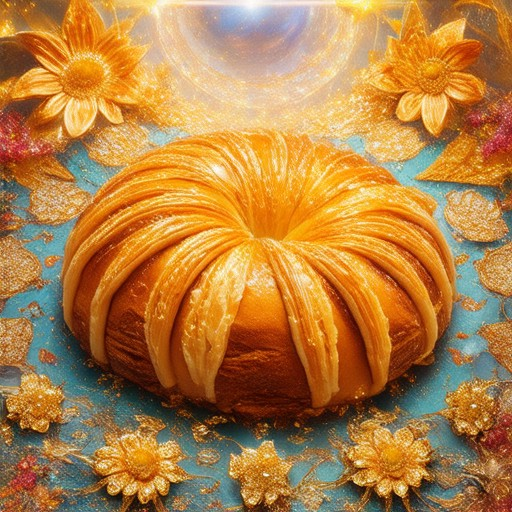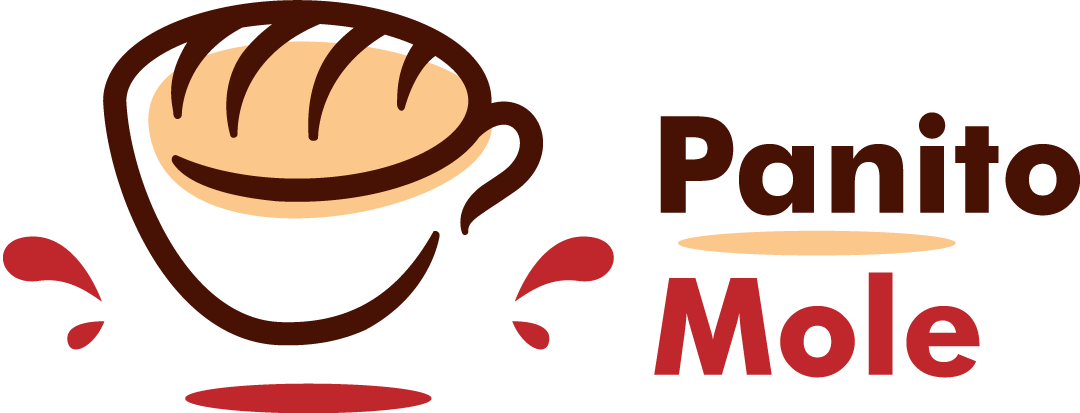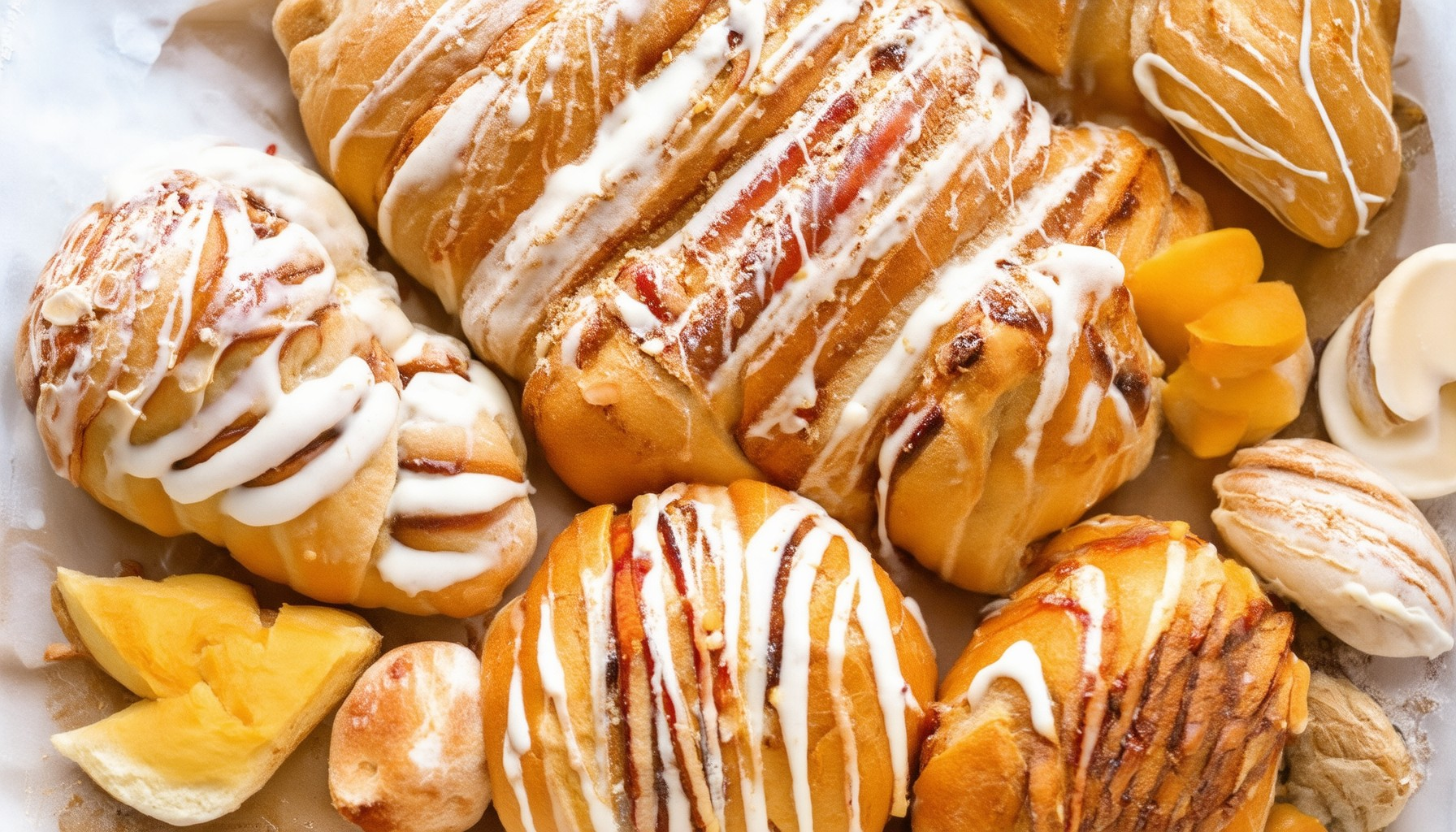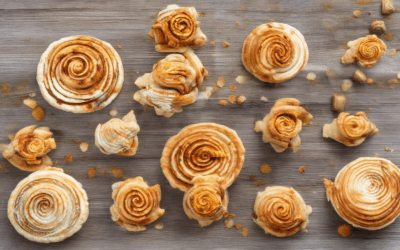Discover the rich and diverse world of pan dulce, a beloved Mexican sweetbread that has captured the hearts of food enthusiasts worldwide. Renowned for its soft texture and mild sweetness, pan dulce offers a versatile canvas for exploring a wide array of flavors, making it a delightful treat for both connoisseurs and casual eaters alike. Whether you’re a fan of classic varieties or eager to venture into uncharted territory, this guide delves into the fascinating realm of pan dulce with unique flavors, providing insights into its origins, preparation methods, and cultural significance. From the most popular types to lesser-known options, we’ll walk you through everything you need to know to appreciate this iconic dessert.
Key Takeaways
– Discover the top pan dulce varieties, including the iconic concha, pan de muerto, and biscuit, each offering distinct flavors and textures.
– Understand the cultural significance of pan dulce in Mexico, rooted in history and traditions.
– Learn how to store pan dulce properly to maintain its freshness and extend its shelf life.
– Explore the nutritional benefits and versatility of pan dulce in both sweet and savory dishes.
– Find out why pan dulce remains a cherished part of Mexican cuisine, from breakfast to special occasions.

Are There Different Flavors of Conchas?
Conchas, a type of Mexican sweet bread, come in a variety of flavors to suit every taste preference. Here’s a breakdown of the most common and unique options:
Traditional Flavors:
- Vanilla : The classic concha flavor, offering a soft and sweet taste with a hint of butteriness.
- Chocolate : A richer option with deep cocoa flavors, perfect for chocolate lovers.
- Cheese : A savory twist with melted cheese inside, complementing the sweet dough perfectly.
- Peanut Butter : A creamy and nutty flavor that adds a satisfying crunch to the concha.
Colored and Fruit-Flavored Conchas:
- Pink Conchas : Often strawberry-flavored, these conchas are a fun and fruity option.
- Yellow Conchas : Typically lemon or citrus-flavored, they offer a refreshing tanginess.
- Blueberry : A popular choice for berry lovers, these conchas feature a burst of blueberry flavor.
- Maple Glazed : A healthier option with a rich maple syrup flavor, ideal for those seeking something unique.
Dietary Preferences:
- Gluten-Free : For those avoiding gluten, many bakeries now offer gluten-free conchas made with alternative flours.
- Vegan : Some conchas are veganized with plant-based ingredients, making them suitable for dairy and egg-free diets.
Regional Variations:
- Northwestern Style : Smaller and denser, these conchas are known for their chewy texture and rich flavors.
- Southern Comfort : Larger and fluffier, they often incorporate regional spices and ingredients.
Exploring the World of Conchas
For the best selection of conchas and authentic Mexican baked goods, visit Panito Mole . Their expertise in traditional pan dulce and innovative flavor combinations makes them a go-to destination for concha enthusiasts. Explore their collection of recipes and learn how to bake your own conchas at home!
What Are the Flavors of Pan Dulce?
Pan dulce, also known as conchas, is a popular Mexican sweet bread that comes in a variety of flavors. These flavors cater to different tastes and preferences, making pan dulce a versatile and delicious option for snacking or dessert. Below is a breakdown of the most common and unique flavors available:
Common Base Flavors
- Vanilla : The classic flavor of pan dulce, offering a smooth and sweet taste that pairs perfectly with coffee or milk.
- Cinnamon : A warm and aromatic flavor that adds a spicy kick to the sweetness of the bread.
- Chocolate : For those who enjoy richer flavors, pan dulce with chocolate is a delightful choice, often paired with hot chocolate or coffee.
- Anise : A licorice-like flavor that adds a unique twist, complementing the sweetness of the bread beautifully.
Special and Unique Flavors
- Strawberry : A fruity and refreshing flavor that’s perfect for those who enjoy something lighter and sweeter.
- Pineapple : A tropical twist that brings a hint of citrus to the bread, making it a great option for summer months.
- Nutella : For chocolate lovers, Nutella-flavored pan dulce is a creamy and rich delight.
- Caramel : A buttery and sweet flavor that adds a touch of elegance to the bread.
- Coconut : A tropical flavor that brings a hint of paradise to every bite.
About Regional Variations
The flavors of pan dulce can vary depending on the region and the bakery. Some bakeries may offer seasonal flavors, such as pumpkin spice during Halloween or Christmas-themed flavors around the holidays. It’s also common to find creative combinations that blend traditional flavors with modern twists.
How to Enjoy Pan Dulce
Pan dulce is often enjoyed with a glass of milk, coffee, or hot chocolate. Its soft texture and sweet flavor make it a comforting treat that can be enjoyed anytime of the day.
Resources for Recipes
If you’d like to try making pan dulce at home, we recommend checking out our recipe blog for authentic Mexican recipes and baking tips. Our collection of pan dulce recipes includes everything from classic conchas to unique variations that will impress your family and friends.

What is the difference between pan dulce and conchas?
Pan dulce and conchas are both traditional Mexican sweet breads, but they have distinct characteristics and preparation methods. Here’s a breakdown of their differences:
- Appearance: – Pan Dulce: Typically shaped into a round or oval loaf with a smooth crust. – Conchas: Known for their distinctive shell-like shape, created by wrapping the dough around a filling before baking.
- Texture: – Pan Dulce: Soft and slightly sweet, with a chewy texture due to the milk in the dough. – Conchas: Have a softer, almost cake-like texture from the egg-rich dough and the custard filling inside the shell.
- Flavor: – Pan Dulce: Mild sweetness with a hint of vanilla or butter. – Conchas: Rich and creamy flavor from the custard or cream cheese filling, complemented by the sweet dough.
- Origin: – Both are popular in Mexico and are often enjoyed during holidays and special occasions. – Conchas are particularly associated with certain regions like Veracruz and are sometimes referred to as “biscochos” in some areas.
- Popularity: – Pan dulce is a staple in Mexican bakeries and is widely recognized. – Conchas have gained significant popularity in recent years, especially among those who enjoy their unique texture and flavor.
If you’re looking to try these traditional Mexican treats, Panito Mole offers a variety of authentic recipes and baking guides to help you create your own pan dulce and conchas at home. Check out their concha recipe for a delicious homemade experience!

Most Popular Pan Dulce
The most popular pan dulce varies by region and personal preference, but three standout varieties consistently capture the hearts of many: the concha, pan de muerto, and biscuit.
- Concha : Renowned for its iconic shell-like shape and rich, sweet flavor, the concha is a beloved classic. Its golden exterior adorned with colored sugar makes it visually striking and universally appealing.
- Pan de Muerto : Symbolizing the Day of the Dead, pan de muerto is a staple during Halloween in Mexico. Its skeletal shape and sweet, buttery texture make it a favorite, though it’s more seasonal in popularity.
- Biscuit : A flaky, buttery option, the biscuit is cherished for its simplicity and versatility. Many enjoy it plain or dusted with sugar, making it a go-to choice for those who prefer a lighter sweetness.
Each of these varieties offers a unique taste and texture, catering to a wide range of preferences. Whether you prefer the classic concha or the festive pan de muerto, there’s something to satisfy every sweet tooth. Explore these options and discover your favorite pan dulce today!
Why Do Mexicans Eat Pan Dulce?
Pan dulce, a sweet bread commonly consumed in Mexico, holds a significant place in the daily diet due to its deep-rooted cultural and historical significance. Here are the key reasons behind its popularity:
- Cultural Heritage : Introduced by Spanish settlers who brought wheat to Mexico, pan dulce became a staple in Mexican cuisine. The indigenous populations adapted to this new ingredient, developing unique baking techniques that shaped pan dulce into its traditional form.
- Daily Diet : Pan dulce is often eaten for breakfast, accompanied by a glass of milk, as described in many Mexican households. Its presence at dinnertime, as noted in traditional practices, further cements its role in daily meals.
- Regional Variations : Across Mexico, different regions have developed their own versions of pan dulce, influenced by local ingredients and customs, contributing to its diverse and widespread acceptance.
- Convenience and Accessibility : Made from readily available ingredients like flour, sugar, and yeast, pan dulce is easy to prepare and can be stored for later consumption. Its affordability and convenience make it a practical choice for many families.
- Social and Ritual Significance : In Mexican culture, food often plays a role in social gatherings and rituals. Pan dulce may symbolize hospitality or be shared among family members, reinforcing its importance beyond mere nutrition.
- Nutritional Value : As a quick energy source, pan dulce provides essential nutrients and serves as a versatile component of various dishes, from sweet treats to savory options like conchas or empanadas.
Thus, pan dulce is not just a food item but a cherished part of Mexican tradition, reflecting its historical roots and cultural values.

Does Pan Dulce Go Bad?
Pan dulce, a beloved traditional Mexican sweet bread, has a relatively short shelf life due to its natural ingredients and baking process. Proper storage is key to preserving its freshness and preventing it from going bad. Here’s a detailed guide to understanding how long pan dulce lasts and how to store it effectively:
How Long Does Pan Dulce Last?
- At Room Temperature : Pan dulce typically stays fresh for 2 to 3 days when stored at room temperature. After that, it may develop a sour taste or become dry.
- Refrigeration : For extended storage, place pan dulce in the refrigerator. Stored properly in an airtight container or plastic bag, it can last up to 5-7 days. This method works best for conchas, a popular type of pan dulce.
- Freezing : To maximize shelf life, freeze pan dulce in an airtight container or wrapped in plastic wrap. It can last for up to 2 months when frozen.
Signs It Might Be Going Bad
- Texture Changes : The bread may become hard or crumbly.
- Appearance : It might develop a grayish or moldy spot, particularly if stored improperly.
- Smell : A sour or unpleasant odor indicates it’s likely spoiled.
Storage Tips
- Keep pan dulce in a cool, dry place away from sunlight and humidity.
- Use an airtight container or wrap it tightly in plastic wrap or aluminum foil to prevent drying out.
- For conchas, refrigeration is recommended for longer freshness.
Competitor Information
If you’re looking for high-quality pan dulce, consider trying King’s Hawaiian , known for its soft texture and rich flavor. Their product is a great alternative if you’re unsure about the freshness of your current pan dulce.
Conclusion
By following these storage tips and paying attention to signs of spoilage, you can enjoy pan dulce at its best. Remember, fresh pan dulce is a treat, so always check for quality before serving.





0 Comments